Hermès’ Baselworld booth is amazing. Designed by award-winning architect Toyo Ito in the vein of the brand’s alluring Paris Rive Gauche boutique, it feels almost like a contemporary art gallery – one that expresses the brand’s fundamental values: craftsmanship, a commitment to work carried out by hand, and the noble elegance of natural materials such as wood as well as an appreciation of time, precision, and innovation.
Light and open, Hermès has created a serene and welcoming space whose organic design is brought to life by wooden shafts that seem to undulate like swell of the sea.
It is soothing and stimulating all at the same time.
When I entered the new CEO’s office within the remarkable Hermès booth at Baselworld, I was singularly impressed by the down-to-earth attitude of a man who has worked within Hermès structure for two decades – his most recent position had been in leather: Hermès’ stock-in-trade.
For anyone interested in fashion, it’s difficult to understand how someone might want to leave the arena that produces what are certainly the most iconic handbags in the world to head up a still-nascent division comprising so many technical components and requiring years of education to understand.
But to me, Laurent Dordet seemed genuinely happy to be active in this new field – which he had taken over just weeks before Baselworld started. And my impression was that he was also perhaps a tad humbled and surprised by what he’d found there.
“What is most surprising to me, and also fascinating, is that it’s a crowd of passionate people. You have that kind of magical ambience that is really, for me, the singularity of this business and of this industry. Passion and knowledge are incredibly high.”
I press the point with the handbags, though. “Hermès’ handbags must have a similar sort of passionate following,” I insist.
“The customers are passionate for sure,” he answers patiently, “But they do not analyze what is inside the product as deeply; they do not have the same relationship with the object. They also have an emotional contact, but one that is more [triggered] by the touch. They don’t care how the bag is made. Whereas in the watch industry, both aspects are important. You like the look and so on, then you like the functions. And then you say, ‘Well, what a fascinating technical challenge they achieved’.”
“And people know everything here.”
Dordet and I went on to chat about storytelling in the luxury market, and he reminded me of something important. “This industry is different. It’s not only the story you tell, it’s the technical way that was followed to achieve this story.”
It’s nice to see a “new” CEO with immediate understanding of that element, I thought. This is, of course, what makes watchmaking so much more different from every other luxury field.
He continues by illustrating the process for a handbag purchase. “The purchase act is not the same [as for a timepiece],” he says. “When a woman, or even a man, likes a bag, for sure she will pay attention to details. She will notice excellence and know-how, but in the end, it’s a feeling she has toward the object itself. And she doesn’t ask for rational arguments on top of the emotion she already has.”
Dordet feels that, especially when it comes to men’s watches, both emotion and rationale are involved in the decision to purchase. “That’s also why, as an Hermès brand, we definitely have to speak the same language from a technical point of view, meaning we must humbly but ambitiously try to bring our know-how as close as possible to the level of the best.”
Purity, simplicity, slow and steady
Hermès does not emulate anyone else’s style, neither today nor from the past. But that does not mean that Hermès does not evolve. In fact, I note with great pleasure that from year to year Hermès’ timepieces just keep getting better and better.
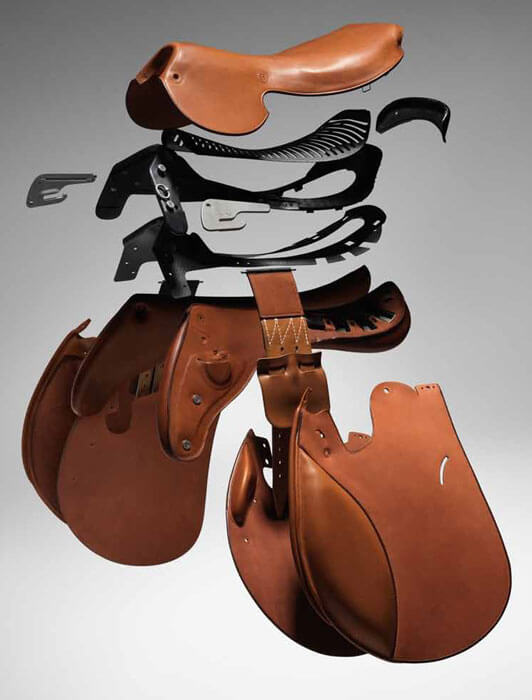
Hermès’ roots are in the equestrian world, and the brand still makes very high-quality saddles and riding gear (less than one percent of total business)
“We have a specific identity because we don’t come from the watch world; we didn’t come from the men’s business or the women’s business. Our first customers were in fact horses,” Dordet smiles as he refers to the equestrian leather harnesses and bridles with which Thierry Hermès opened his first shop in Paris.
“For watches, we are, of course, more recent, and as long as the know-how is here, more and more we have to tell our story, and to be what we are. And we are a creation company. So when we do métiers d’art, we have to express our own patrimony of designs, for example. And, what I like, what is in resonance with me in terms of our watches, is that Hermès is not a show-off brand.
“The essential and sobriety are the key values and not only words.
“For me, the purest handbags are the most beautiful: the Kelly, which is a trapeze, the Plume, which is for me fantastic as it’s just a square. But if they were not perfect, they’d be ugly. If the details are not perfect, they’re ugly. But when you find the right balance, you receive divine things. And the challenge here with the Slim d’Hermès was to find something simple, something so refined.”
Is that “all”?
When you first hear someone talk about the Slim d’Hermès, when you’re told about the new font created by French graphic designer, Philippe Apeloig, you might initially think, “Is that all?”
But then, when you see the watches, you strike that thought right out of your head.
At Hermès it is truly about the details in every product line. The details are what combine to make the Slim d’Hermès as intriguing as it is while remaining eminently wearable. And to remain as elegant in the larger version as it might be in the smaller version. “This sum of very small details makes something elegant,” Dordet goes on to explain the new backbone line, which he also chose to wear during the world’s biggest and most important watch fair.
For Dordet, the Slim d’Hermès perfectly exemplifies the tagline “Hermès: elegance in motion.”
“This refers to the time when the main métier of Hermès was harness making; in 1837 harnesses had a function: they allowed the horse to pull a cart. And Thierry Hermès was the kind of guy to find a way to make the harness strong enough to pull the cart, but as slim as possible to show the beauty of the animal without hurting it.”
Thierry Hermès developed the specific technique needed to make slim and elegant harnesses, so that while in motion the horse remains elegant. I had never thought of it that way.
“We never do market research in terms of product,” Dordet goes on to explain. “We are not there to say, ‘I will make this watch for the classically styled men, for unconventional women, for older people, for young ones, for the Chinese or the Japanese.’ This is forbidden at Hermès; we just do what we believe in. And as far as possible, things that are representative of our DNA, our soul, and our style.”
“I think authenticity is the key word. If you are just what you are, then one day, it pays off. One day people see you are not like the others and you just express what you are. And they want to follow you.”
To discover the Slim d’Hermès line and see original photography, please read Introducing Slim d’Hermès: The Elegant New Backbone Of The Hermès Collection.
























































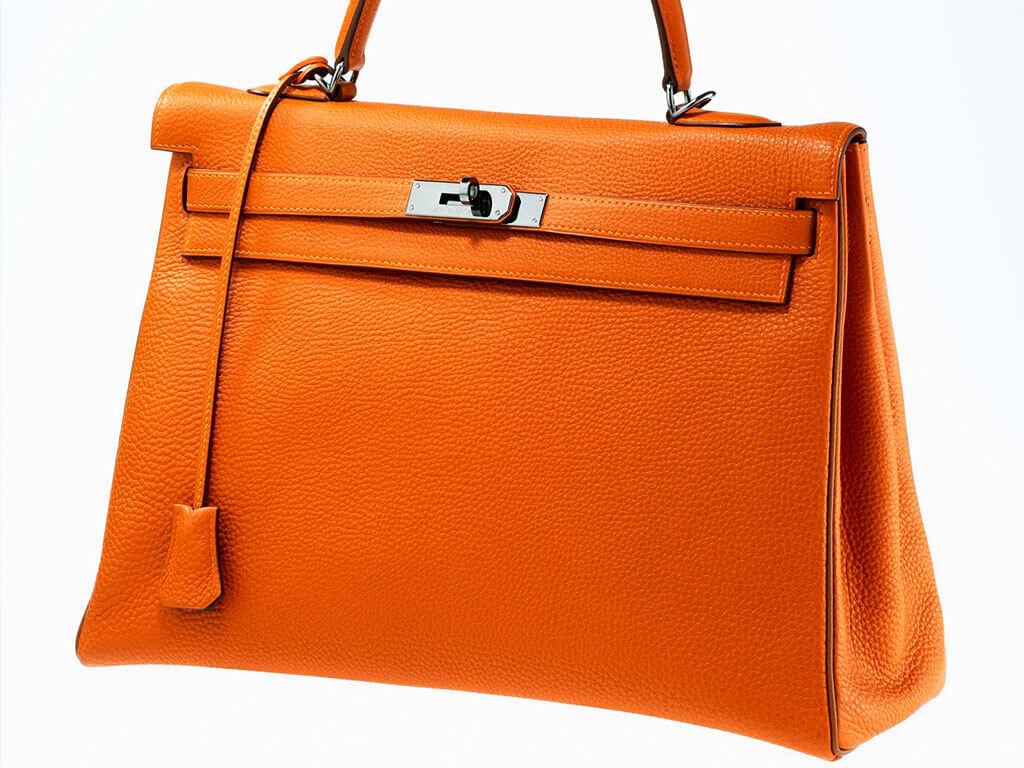
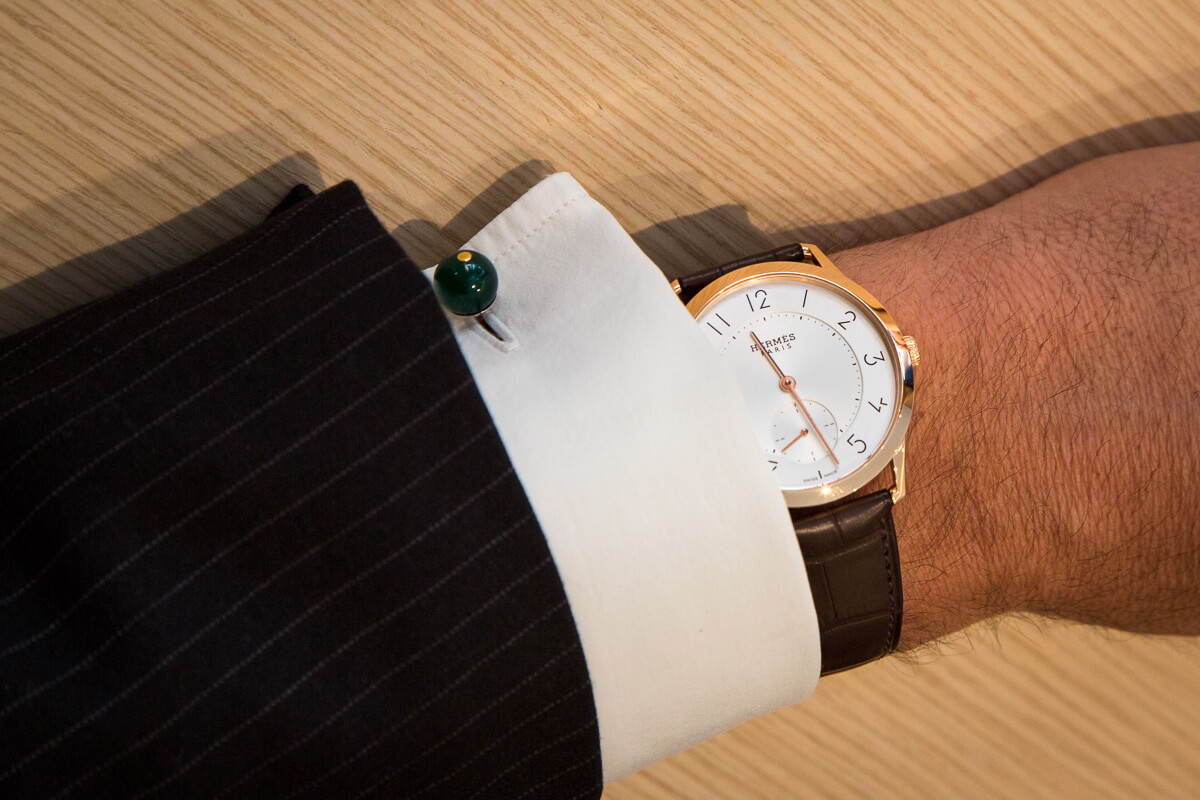
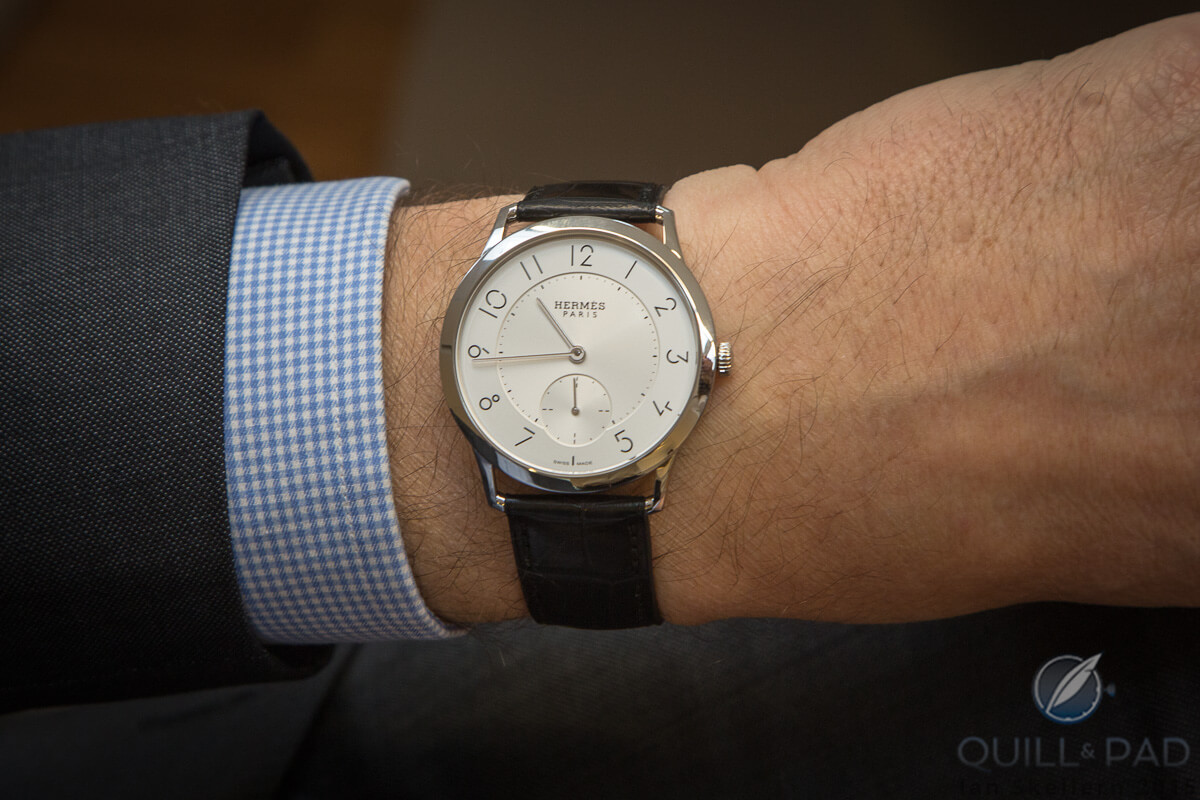
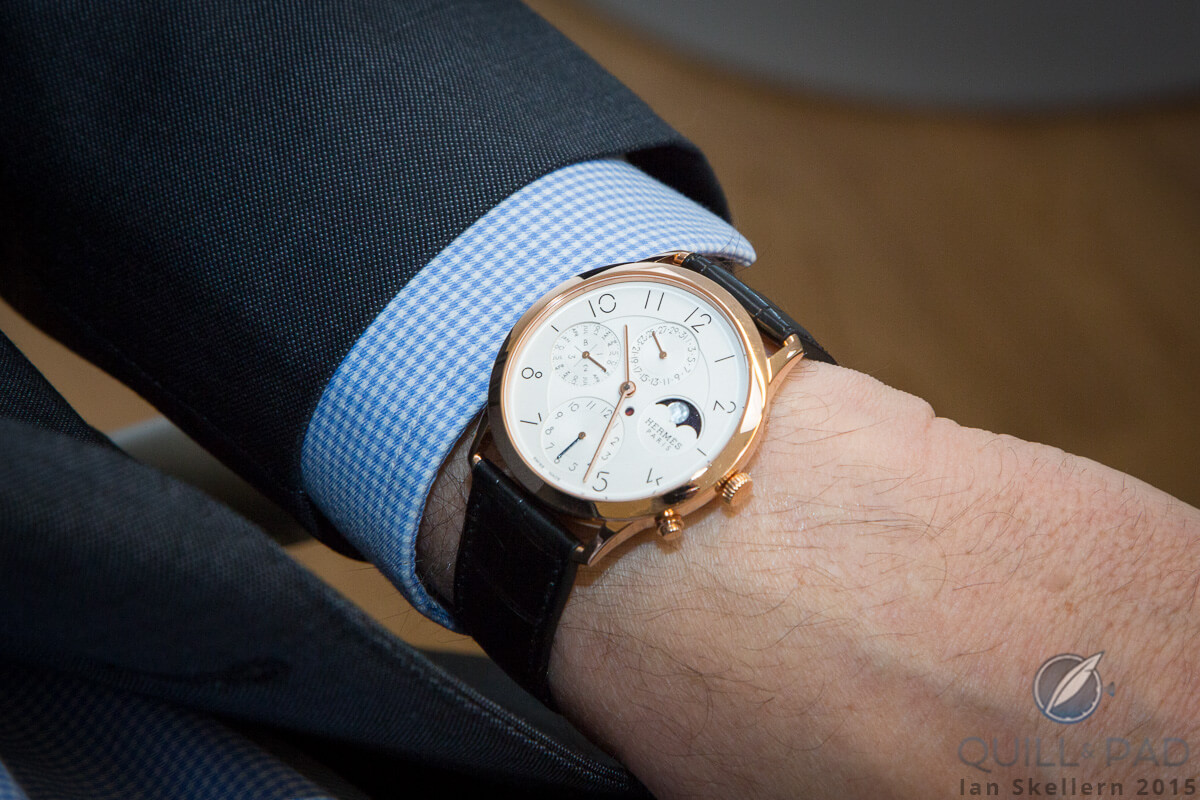
Leave a Reply
Want to join the discussion?Feel free to contribute!